Luxurious, sleek, and modern – underfloor heating is a comfortable yet practical addition to any property.
Not only is it cleaner and smarter than traditional heating methods, it’s also far more enjoyable. The even spread of gentle warmth from the ground-up results in a highly consistent temperature - with no annoying cold spots.
In terms of the heating industry, underfloor heating has taken up greater market share year-on-year, and is expected to almost double in value by 2027.
Whether you’re installing an underfloor heating system that encompasses the whole house, or just heating a singular room, there’s a lot of information to process when buying and installing underfloor heating of any kind.
In order to help give you full confidence when talking to customers, we’ve put together a comprehensive guide outlining everything you’ll need to know about underfloor heating.
What Is Underfloor Heating?
Underfloor heating warms the floor via a system of heating wires or hydronic pipes just below your feet. In essence, underfloor heating turns the whole floor into a radiator, running at a lower temperature than traditional radiators but providing an equal amount of overall heat.
Depending on the type of system, underfloor heating connects to either the main power supply, or the water heating system.
What Are the Benefits of Underfloor Heating?
Underfloor heating comes with a plethora of benefits that has led to vastly increased installation rates and customer demand over the past decade. Little wonder, too – underfloor heating can provide an extensive range of improvements to any indoor space, including:
· Improved energy efficiency and lower heating costs
· General adaptability and design freedom - no need for visible pipes or radiators
· Low maintenance after installation
· Quicker, more evenly distributed room heating
· Can work hand-in-hand with renewable technology (e.g.Heat Pumps or Solar Thermal)
· Safety – no leaks or spills
· Increased property value
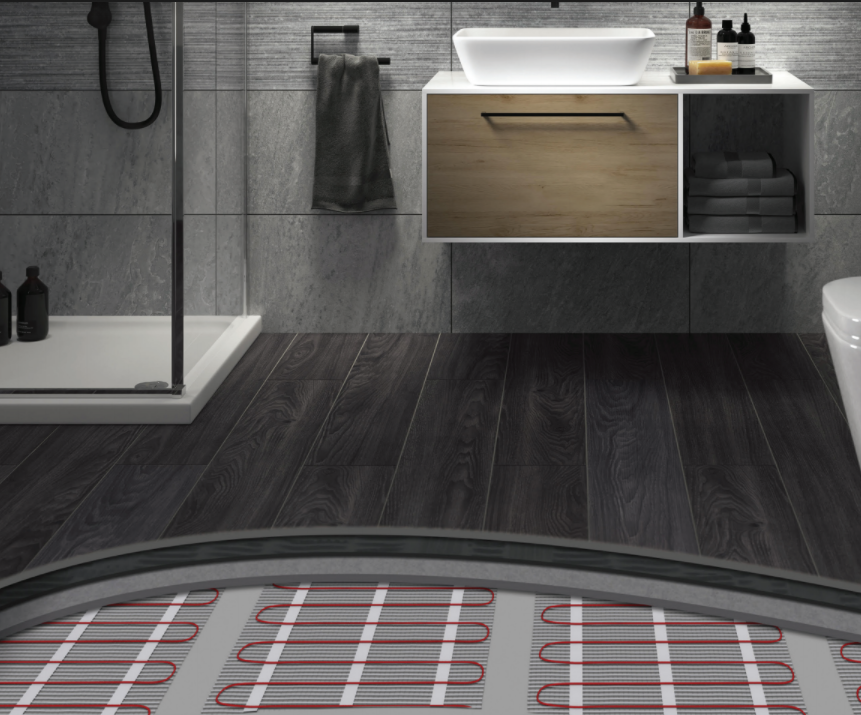
Underfloor heating systems can also add space and convenience to any room. By eliminating the need for large radiators, it’s possible to increase the usable floor and wall area of a house by 10-20%. New parents typically appreciate underfloor heating systems, as it’s far safer for young children compared to traditional radiators.
Strangely enough, underfloor heating systems come closer to the definition of a ‘radiator’ than an actual radiator is. By heating the whole floor, heat is more effectively transferred and spread throughout the entirety of a room. When heating a room from the ground up, customers won’t experience any cold spots – or get chilly feet on a frosty morning!
Types of Underfloor Heating
Underfloor heating comes in two main variations – water systems and electric systems. Let’s compare the two:
Underfloor Electric Systems (Dry Systems)
· Heats the floor via a network of electric heating wires that are connected to the mains electricity supply.
· Are relatively easy to install – smaller rooms can be fitted with an electric underfloor heating system in 30-45 minutes.
· Reaches the target heat much faster than traditional radiators or underfloor water systems.
· Offers an initially cheaper, easier to install and highly versatile way to implement underfloor heating.
Underfloor Water Systems (Wet Systems)
· Heats the floor via pipes that distribute water under the floor. This is connected to the household heat source.
· Takes longer to install – may be better suited to larger spaces or new builds rather than room renovations.
· Higher initial cost, but lower running costs in the long term compared to an electric system.
· Water systems heat concrete flooring far better than electric systems
Underfloor water heating systems (also known as ‘wet systems’) come in two main variations – surface mounted underfloor heating, and buried underfloor heating.
Surface mounted underfloor heating systems – These systems use specialist insulated panels that the pipes flow through. These panels absorb the heat for slow release, and are easier to install than buried underfloor systems due to their low profile. Most surface mounted underfloor systems only add 1-2cm to the overall floor level.
Buried underfloor heating systems – Buried underfloor heating systems are generally more effective for extensions and new builds where users are installing completely new floor screeds. The pipes run through the floor screed, and the pipes are then buried deeper under the floor.
Buried systems are the most practical and economical systems available, and the upfront costs are typically cheaper than surface mounted systems. The trade off is that they’re not always suitable for retrofitting, and take far more time and effort to install.
Which Underfloor Heating System Is Best?
Most rooms can be heated successfully with an underfloor heating system. Yet with a varied range of underfloor heating options available, it’s important to pick the most effective one for the room in question, to ensure you (and your customers) are getting the best bang for your buck.
Generally speaking, wet underfloor heating systems are far more effective when building a house, garage, or extension from scratch. Additionally, they’re generally more cost-effective if you’re planning a whole-house underfloor heating system.
On the other hand, electric underfloor heating systems are preferred in smaller, singular areas due to its easy-to-install, almost plug-and-play nature. We commonly see electric UFH systems installed in bathrooms or small bedrooms.
Will Underfloor Heating Work with My Floor?
Floor construction is a crucial factor of any underfloor heating design. Floating floors, suspended wooden floors, and screed floors require consideration on a case-by-case basis to ensure optimal performance and heat distribution. Despite this, most common flooring types work well with underfloor heating systems, and customers have a wide range of options to pick from when it comes to flooring.
(Side note: always check with the system manufacturer to see if your floor type is compatible)
Ceramic / Stone Floors – These floors are ideal for underfloor heating systems due to their high thermal conductivity and thermal mass. This means that heat transfers from the system to the floor extremely quickly, and the floor itself retains the heat well. This enables an even spread of warmth, and cost-effective operation.
Wood Floors – Wooden floors are a mixed bag when it comes to underfloor heating, as certain wood floorings are strong insulators. Strong insulation reduces the effectiveness of the system and can increase running costs. Some woods - such as engineered timber - perform very well with fluctuating temperatures, and are thinner / less insulating than other wood floors. This makes engineered timber the wooden floor of choice for underfloor heating.
Vinyl Floors – Another excellent contender for underfloor heating, vinyl flooring excels at transferring heat from the floor to the room above. Whilst most modern vinyl floors are compatible with underfloor heating, it’s definitely worth double-checking with the manufacturer.
Carpet – Carpet is certainly not the most effective flooring, but it can work – especially with thinner carpets. As a rule of thumb, underfloor heating systems should not be combined with carpets that exceed 1.5 tog (including the underlay).
Concrete – Similar to stone flooring, polished concrete floors boast a high thermal mass which provides quick heat up times and great heat retention. Keep in mind that wet heating systems will prove to be far more efficient for heating thicker concrete floors.
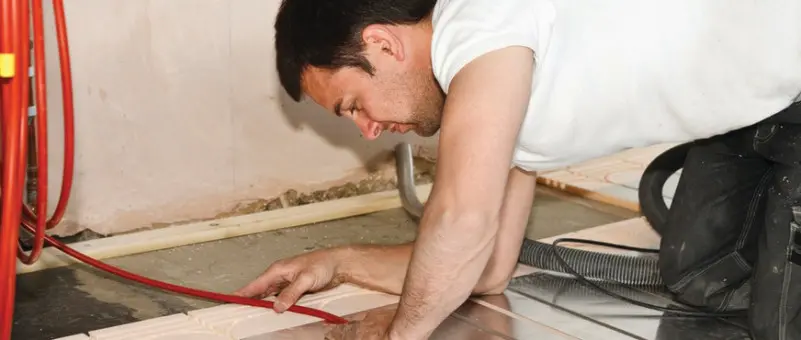
What Are the Costs of Underfloor Heating?
With a wide variety of underfloor heating systems available, the initial cost of underfloor heating largely depends on the size of the room you’ll be fitting it under. Underfloor heating in general will demand a higher initial investment compared to traditional radiators, however customers place a great deal of value in UFH systems. This is further amplified for wet underfloor heating systems.
When comparing the costs of electric vs. water underfloor heating, remember that electric systems are much cheaper to initially buy and install in smaller rooms. A general rule of thumb is that water based systems reach an equilibrium at 15sqm, and become cheaper in spaces larger than that. Of course, every installation is different and prices may vary due to external factors.
Customers should know that running costs depend on heat output, running time, and the size of the area being heated. Areas with high heat loss (e.g. conservatories) can cost far more than well insulated rooms, so keep that in mind when planning and installing an underfloor heating system for a customer.
Underfloor Heating Installation
When installing underfloor heating systems, there are a few key factors that professionals must consider.
Wet Systems:
Water temperature control - In order to meet the requirements of BS EN 1264, you must provide water temperature control when installing wet systems. This ensures maximum floor surface temperature is not exceeded, ensuring user safety and longevity of your heating system.
Pipe layout - Wherever possible, underfloor pipes should be laid out to ensure the flow passes the coldest area of the room first - such as below the windows - before passing the rest of the room.
Pipe spacing - Well insulated rooms don’t require pipes to be laid as densely as rooms with high heat loss. It depends on the system you’re installing, but most pipes are spaced out between 200mm. In areas with high heat loss, such as conservatories, pipe spacing can be up to half the normal spacing.
Heat source - When installing underfloor systems in a new build, consider installing a boiler or heat source that works well with UFH systems. Modern high-efficiency condensing boilers pair extremely well with underfloor heating systems, as the low water temperatures enable the boiler to work in condensing mode.
Heat pumps and ground source solutions are becoming increasingly popular with customers, and both work well with UFH systems.
Electric Systems:
Fitting - Electric underfloor heating systems can be installed by a DIY person with competent knowhow, but most customers will choose to get a professional installer to fit the system. It’s important to keep in mind that any electric work - including wiring and thermostat connection to the system - must be completed by a part P certified/NICEIC electrician.
Insulation boards - Using insulation boards can reduce running costs by up to 50%, so most customers will opt to have them installed. Boards are available in a range of depths from 6mm to 50mm, so ensure you pick the most suitable option.
Always ensure you refer to the manufacturer guidelines when installing any underfloor heating system.
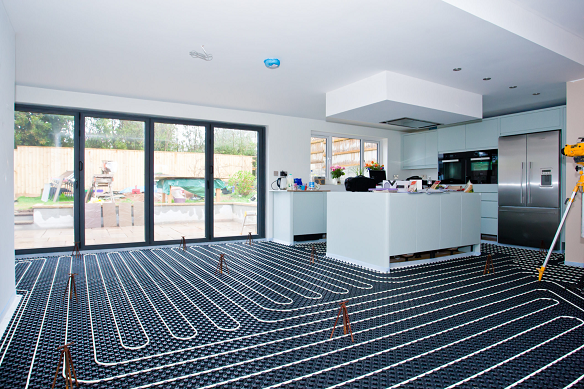
At City Plumbing, we’ve helped industry professionals with heating installations for over 35 years, giving us the skills and knowhow to support any underfloor heating system installation.
Should you have any questions about underfloor heating system installation for any building or renovation project, get in touch with our experienced team for expert advice.
Other articles
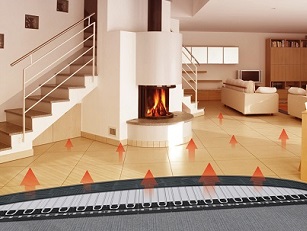
The difference between electric & water underfloor heating
22 Mar 2022 ・ 6 mins
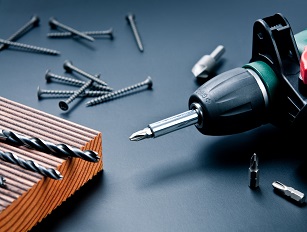
How to protect your van from break-ins and tool theft
29 Mar 2022 ・ 7 mins

Smart Home Heating Controls: A Guide for Installers
03 Mar 2022 ・ 4 mins



